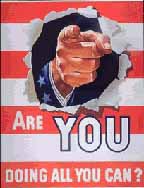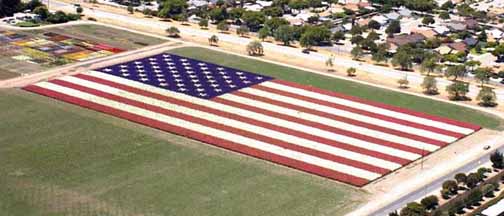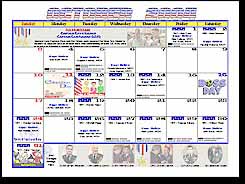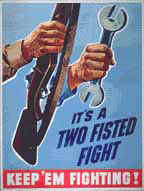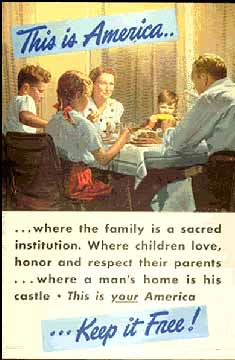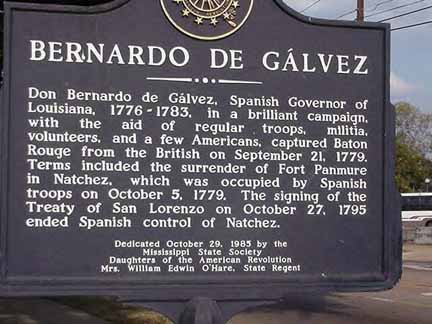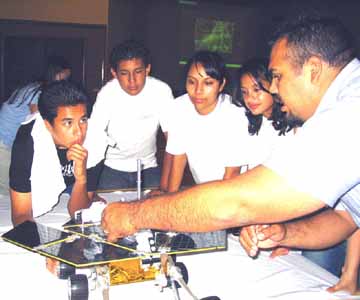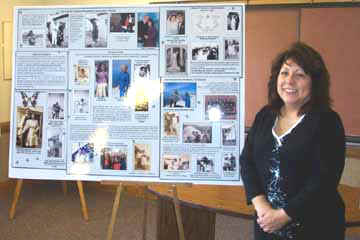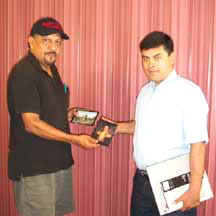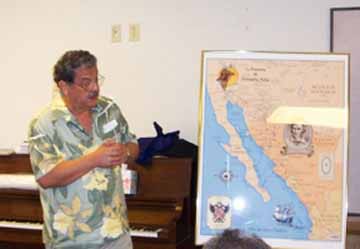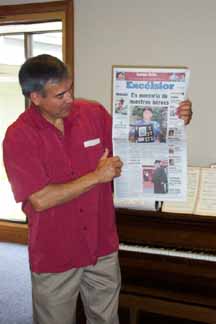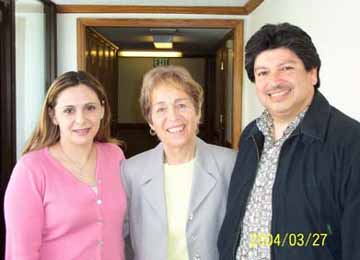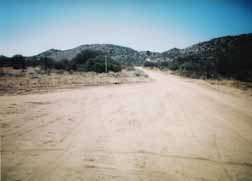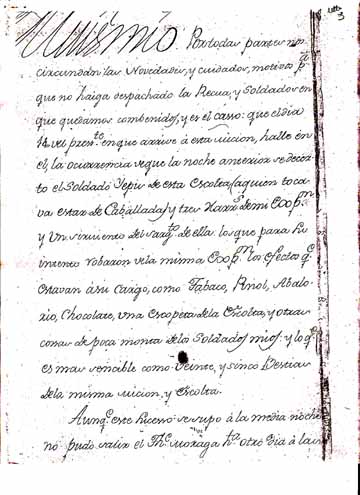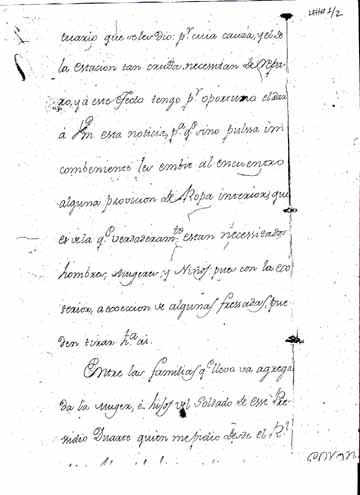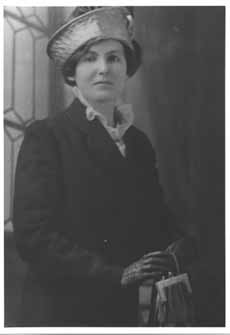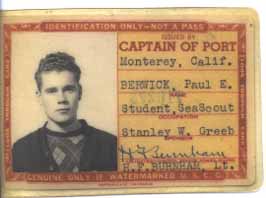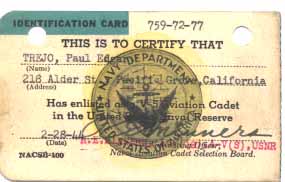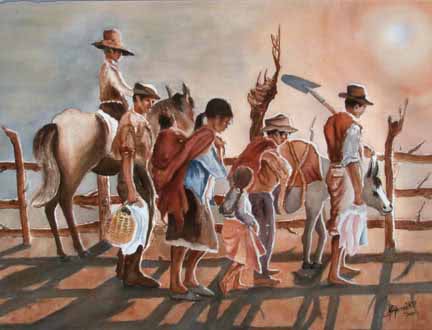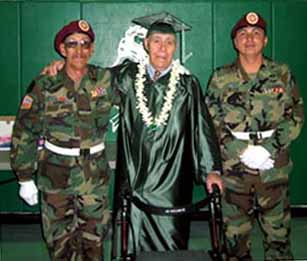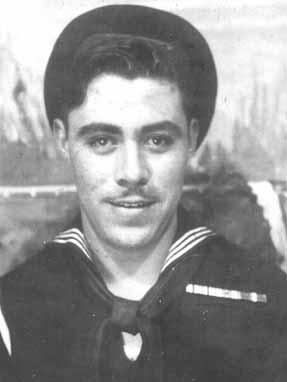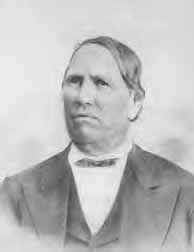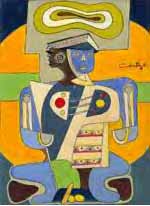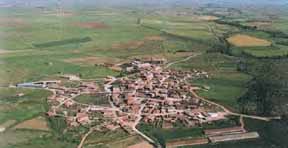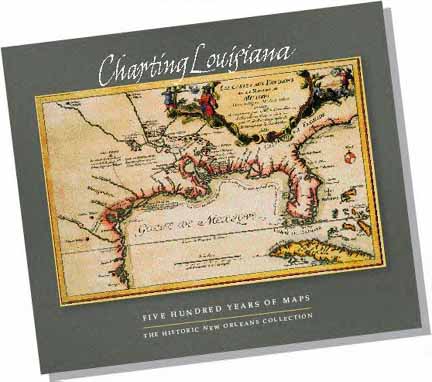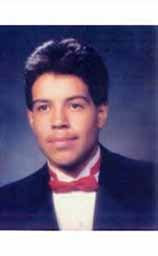|
GENERATION 4
12.
JOSE-ANTONIO6 CISNEROS-GUAJARDO (MARIA-ANTONIA5
GUAJARDO-VILLARREAL, MARIA-IGNACIA4 DE
VILLARREAL-TREVINO, CRISTOBAL3 DE VILLARREAL-DE-LAS-CASAS,
DIEGO2 DE VILLARREAL, FRANCISCO1
VILLARREAL) was born Abt. 1750 in Camargo, Tamaulipus, Mexico. He
married ANA-MARIA PEREZ-HINOJOSA September 24, 1781 in Nuestra Sra de
Santa Anna, Camargo, Tamaulipas, Mexico, daughter of MIGUEL PEREZ and
BERNARDA HINOJOSA.
Children of JOSE-ANTONIO
CISNEROS-GUAJARDO and ANA-MARIA PEREZ-HINOJOSA are:
20. i. MARIA-DEL-REFUGIO7
CISNEROS-PEREZ.
ii. MARIA-ANTONIA
CISNEROS-PEREZ, m. JOSE MARIA TREVINO-SAN-MIGUEL, August 12,
1804, Nuestra Sra del Refugio, Matamoros, Tamaulipas, Mexico; b.
Villa de Pilon, Nuevo Leon, Mexico.
iii. FRANCISCO
CISNEROS-PEREZ, m. FRANCISCA DE-LOS-SANTOS.
iv. JUAN-NEPOMUCENO
CISNEROS-PEREZ.
v. GUADALUPE
CISNEROS-PEREZ.
vi. RICARDO
CISNEROS-PEREZ.
13.
JUAN-NEPOMUCENO6 CISNEROS-GUAJARDO (MARIA-ANTONIA5
GUAJARDO-VILLARREAL, MARIA-IGNACIA4 DE
VILLARREAL-TREVINO, CRISTOBAL3 DE VILLARREAL-DE-LAS-CASAS,
DIEGO2 DE VILLARREAL, FRANCISCO1
VILLARREAL) was born Abt. 1765 in Camargo, Tamaulipus, Mexico, and
died in Matamoros, Tamaulipus, Mexico. He married
MARIA-TERESA-DE-JESUS SALINAS-VILLARREAL December 29, 1787 in Nuestra
Sra de Santa Anna, Camargo, Tamaulipas, Mexico, daughter of
JOSEPH-FRANCISCO-JAVIER SALINAS-GARCIA and MARIA-QUITERIA
VILLARREAL-HINOJOSA. She was born Abt. 1768 in Camargo, Tamaulipus,
Mexico, and died in Matamoros, Tamaulipus, Mexico.
Children of JUAN-NEPOMUCENO
CISNEROS-GUAJARDO and MARIA-TERESA-DE-JESUS SALINAS-VILLARREAL are:
i. JUAN-DIEGO7
CISNEROS-SALINAS.
21. ii. JUAN-NEPOMUCENO
CISNEROS-SALINAS, b. Abt. 1788, Matamoros, Tamaulipus, Mexico.
iii. GUADALUPE
CISNEROS-SALINAS, b. 1789; m. JOSE-RAFAEL GARCIA-HINOJOSA,
February 25, 1805, Nuestra Sra del Refugio, Matamoros,
Tamaulipas, Mexico.
22. iv. JOSE-NICOLAS
CISNEROS-SALINAS, b. Abt. 1792.
23. v. RAFAEL-MARIA
CISNEROS-SALINAS, b. Abt. 1798, Matamoros, Tamaulipus, Mexico;
d. Matamoros, Tamaulipus, Mexico.
vi. FRANCISCO
CISNEROS-SALINAS, b. Abt. 1801, Matamoros, Tamaulipus, Mexico;
m. MARIA-PAULA CHAPA-GUERRERO, August 16, 1825, Nuestra Sra del
Refugio, Matamoros, Tamaulipas, Mexico.
24. vii. JOSE-RAMON
CISNEROS-SALINAS, b. Abt. 1802, Camargo, Tamaulipas, Mexico; d.
March 29, 1830, Matamoros, Tamaulipas, Mexico.
viii. JOSE-DAMACIO
CISNEROS-SALINAS, b. 1804; m. TERESA HINOJOSA-SALINAS, July 26,
1829, Nuestra Sra del Refugio, Matamoros, Tamaulipas, Mexico.
ix. FRANCISCA
CISNEROS-SALINAS, b. Abt. 1805.
x. MARIA-ANDREA
CISNEROS-SALINAS, b. Abt. 1808, Matamoros, Tamaulipus, Mexico;
m. JOSE-ANTONIO GARCIA-GOMEZ, April 30, 1821, Nuestra Sra del
Refugio, Matamoros, Tamaulipas, Mexico.
xi. JOSEFA
CISNEROS-SALINAS, b. Abt. 1809, Matamoros, Tamaulipus, Mexico;
m. BENITO VILLARREAL.
xii. BERNARDINO
CISNEROS-SALINAS, b. May 28, 1812.
xiii. MARIA-RITA
CISNEROS-SALINAS, b. June 14, 1814, Matamoros, Tamaulipus,
Mexico.
14.
PEDRO-JOSEPH6 GUAJARDO-DEL-RIO (CRISTOBAL5
GUAJARDO-VILLARREAL, MARIA-IGNACIA4 DE
VILLARREAL-TREVINO, CRISTOBAL3 DE VILLARREAL-DE-LAS-CASAS,
DIEGO2 DE VILLARREAL, FRANCISCO1
VILLARREAL) was born 1735 in Saltillo, Coahuila, Mexico. He
married (1) ANA-MARIA GALINDO September 25, 1757 in Sagrario Metro,
Saltillo, Coahuila, Mexico. He married (2) MARIA-ANTONIA ELIZONDO-DE-LA-GARZA
May 18, 1778 in Nuestra Sra de Guadalupe, Salinas Victoria, Nuevo
Leon, Mexico, daughter of JOSEPH DE ELIZONDO-VILLARREAL and FRANCISCA
DE-LA-GARZA-VILLARREAL. She was born 1742 in Hacienda de San Nicolas,
Nuevo Leon, Mexico.
Marriage Notes for PEDRO-JOSEPH
GUAJARDO-DEL-RIO and MARIA-ANTONIA ELIZONDO-DE-LA-GARZA:
Marriage Source;From the book,
Index to the Marriage Investigations of the Diocese of Guadalajara by
Raul J. Guerra, Jr., Nadine M. Vasquez, Baldomero Vela, Jr. Page 241
[115-15]
Child of PEDRO-JOSEPH GUAJARDO-DEL-RIO
and ANA-MARIA GALINDO is:
i. MARIA-DE-LA-TRINIDAD7
GUAJARDO-GALINDO, b. October 11, 1764, San Juan Bautista,
Lampazos de Naranjo, Nuevo Leon, Mexico.
Child of PEDRO-JOSEPH GUAJARDO-DEL-RIO
and MARIA-ANTONIA ELIZONDO-DE-LA-GARZA is:
25. ii. PEDRO-JOSE7
GUAJARDO-ELIZONDO, b. June 02, 1782, San Pedro, Villaldama,
Nuevo Leon Mexico.
15.
JOSE-HERMENEGILDO6 VILLARREAL-VILLARREAL
(JOSEPH-FRANCISCO5 VILLARREAL-CANTU, MIGUEL4
DE VILLARREAL, CRISTOBAL3 DE VILLARREAL-DE-LAS-CASAS,
DIEGO2 DE VILLARREAL, FRANCISCO1
VILLARREAL) was born April 24, 1763 in Salinas Victoria, Nuevo
Leon, Mexico. He married MARIA-CECELIA-CLEMENCIA ELIZONDO-DE-LA-GARZA,
daughter of FRANCISCO-ANTONIO ELIZONDO-LOZANO and MARIA-ANTONIA
DE-LA-GARZA-DE-LA-GARZA. She was born November 30, 1779 in Sagrario
Metropolitano, Monterrey, Nuevo Leon, Mexico.
Children of JOSE-HERMENEGILDO
VILLARREAL-VILLARREAL and MARIA-CECELIA-CLEMENCIA ELIZONDO-DE-LA-GARZA
are:
26. i. JOSE-VICTORIANO7
VILLARREAL-ELIZONDO, b. San Francisco, Apodaca, Nuevo Leon,
Mexico.
27. ii. MARIA-JUANA
VILLARREAL-ELIZONDO, b. 1795.
16.
LEONARDA6 VILLARREAL-DE-LA-GARZA (JUAN-FRANCISCO5
DE VILLARREAL, JUAN-CAYETANO4, CRISTOBAL3
DE VILLARREAL-DE-LAS-CASAS, DIEGO2 DE VILLARREAL,
FRANCISCO1 VILLARREAL) She married JOSE MARIA
DE-LA-GARZA-DE-LOS-SANTOS January 12, 1778 in San Carlos, Vallecillo,
Nuevo Leon, Mexico, son of JOSEPH DE-LA-GARZA and MARIA-GREGORIA
DE-LOS-SANTOS-COY-DE-LA-GARZA.
Children of LEONARDA
VILLARREAL-DE-LA-GARZA and JOSE DE-LA-GARZA-DE-LOS-SANTOS are:
i. ANSELMO7
DELAGARZA-VILLARREAL.
ii. JUAN JESUS
DE-LA-GARZA-VILLARREAL, m. ANDREA BENAVIDES-GARCIA, September
02, 1824, Laredo, Webb County, Texas.
28. iii. FABIANA
DE-LA-GARZA-VILLARREAL, b. 1790, Vallecillo, Nuevo Leon, Mexico.
29. iv. JOSE-LAZARO
DE-LA-GARZA-VILLARREAL, b. 1800, Vallecillo, Nuevo Leon, Mexico.
30. v. MARIA-LORETA
DE-LA-GARZA-VILLARREAL, b. 1800, Laredo, Webb County, Texas.
17.
MARIA-MICAELA6 VILLARREAL-DE-LA-GARZA (JUAN-FRANCISCO5
DE VILLARREAL, JUAN-CAYETANO4, CRISTOBAL3
DE VILLARREAL-DE-LAS-CASAS, DIEGO2 DE VILLARREAL,
FRANCISCO1 VILLARREAL) was born 1775 in
Vallecillo, Nuevo Leon, Mexico, and died in Laredo, Webb County,
Texas. She married FRANCISCO FLORES-SANCHEZ January 27, 1800 in San
Carlos, Vallecillo, Nuevo Leon, Mexico, son of JOSE FLORES and
MARIA-MARGARITA SANCHEZ. He was born 1774 in Vallecillo, Nuevo Leon,
Mexico, and died in Laredo, Webb County, Texas.
Children of MARIA-MICAELA
VILLARREAL-DE-LA-GARZA and FRANCISCO FLORES-SANCHEZ are:
i. GREGORIO7
FLORES-VILLARREAL, b. Vallecillo, Nuevo Leon, Mexico; m.
MARIA-DE-LOS-SANTOS CAMACHO-GUERRA, September 09, 1826, San
Agustin, Laredo, Webb County, Texas; b. 1808, Revilla,
Tamaulipas, Mexico.
ii. JOSE-TOMAS
FLORES-VILLARREAL, b. Vallecillo, Nuevo Leon, Mexico; m.
MARIA-TRINIDAD VILLARREAL-TREVINO, May 24, 1830, San Agustin,
Laredo, Webb County, Texas; b. Laredo, Webb County, Texas.
18.
JOSEPH-EUSEVIO6 DE URRUTIA-VILLARREAL (MARIA-GERTRUDIS5
DE VILLARREAL, ANTONIO4 DE VILLARREAL-MARTINEZ,
CRISTOBAL3 DE VILLARREAL-DE-LAS-CASAS, DIEGO2
DE VILLARREAL, FRANCISCO1 VILLARREAL) was born
November 16, 1762 in Nuesta Senora de Guadalupe, Salinas Victoria,
Nuevo Leon, Mexico. He married (1) MARIA-TOMASA GALVAN. He married (2)
MARIA-GERTRUDIS DE VILLARREAL August 01, 1804 in Nuestra Senora de
Guadalupe, Salinas Victoria, Nuevo Leon, Mexico.
Children of JOSEPH-EUSEVIO DE
URRUTIA-VILLARREAL and MARIA-TOMASA GALVAN are:
31. i. JOSE-RAFAEL7
URRUTIA-GALVAN, b. November 07, 1788, Nuesta Senora de
Guadalupe, Salinas Victoria, Nuevo Leon, Mexico.
ii. MARIA LEONARDA URRUTIA-GALVAN,
b. November 17, 1790, Nuesta Senora de Guadalupe, Salinas
Victoria, Nuevo Leon, Mexico.
iii. ANA-MARIA URRUTIA-GALVAN,
b. February 07, 1793, Nuestra Sra de Guadalupe, Salinas
Victoria, Nuevo Leon, Mexico.
iv. MARIA-ESTEFANA URRUTIA-GALVAN,
b. September 14, 1797, Nuestra Sra de Guadalupe, Salinas
Victoria, Nuevo Leon, Mexico.
32. v. MARIA-PETRONALDA
URRUTIA-GALVAN, b. June 08, 1799, Nuesta Senora de Guadalupe,
Salinas Victoria, Nuevo Leon, Mexico.
Children of JOSEPH-EUSEVIO DE
URRUTIA-VILLARREAL and MARIA-GERTRUDIS DE VILLARREAL are:
vi. MARIA-JOSEFA7
DE URRUTIA-VILLARREAL, b. May 14, 1805, Nuestra Sra de
Guadalupe, Salinas Victoria, Nuevo Leon, Mexico.
vii. HIJINIO DE URRUTIA-VILLARREAL,
b. January 13, 1807, Nuestra Sra de Guadalupe, Salinas Victoria,
Nuevo Leon, Mexico.
33. viii. JOSE AGUSTIN DE
URRUTIA-VILLARREAL, b. August 31, 1808, Nuestra Sra de
Guadalupe, Salinas Victoria, Nuevo Leon, Mexico.
ix. JOSE MARIA DE URRUTIA-VILLARREAL,
b. August 17, 1810, Nuestra Sra de Guadalupe, Salinas Victoria,
Nuevo Leon, Mexico.
19.
MARIA-BARBARA6 DE URRUTIA-VILLARREAL (MARIA-GERTRUDIS5
DE VILLARREAL, ANTONIO4 DE VILLARREAL-MARTINEZ,
CRISTOBAL3 DE VILLARREAL-DE-LAS-CASAS, DIEGO2
DE VILLARREAL, FRANCISCO1 VILLARREAL) was born
September 01, 1767 in Nuesta Senora de Guadalupe, Salinas Victoria,
Nuevo Leon, Mexico. She married JOSE-CAYETANO GIRON-BOTELLO November
12, 1786 in San Jose, Sabinas Hidalgo, Nuevo Leon, Mexico, son of
CAYETANO GIRON and MARIA-CAYETANA BOTELLO-MARTINEZ.
Children of MARIA-BARBARA DE
URRUTIA-VILLARREAL and JOSE-CAYETANO GIRON-BOTELLO are:
i. JOSE-GREGORIO7
GIRON-URRUTIA, b. November 23, 1788, San Jose, Sabinas Hidalgo,
Nuevo Leon, Mexico.
ii. MARIA-CAYETANA
GIRON-URRUTIA, b. November 18, 1790, San Jose, Sabinas Hidalgo,
Nuevo Leon, Mexico.
iii. MARIA-DEL-LORETA
GIRON-URRUTIA, b. September 14, 1792, San Jose, Sabinas Hidalgo,
Nuevo Leon, Mexico; m. JOSE-MANUEL SALAZAR-GONZALEZ, January 11,
1816, Nuestra Sra del Refugio, Matamoros, Tamaulipas, Mexico.
Generation No. 5
20.
MARIA-DEL-REFUGIO7 CISNEROS-PEREZ (JOSE-ANTONIO6
CISNEROS-GUAJARDO, MARIA-ANTONIA5 GUAJARDO-VILLARREAL,
MARIA-IGNACIA4 DE VILLARREAL-TREVINO, CRISTOBAL3
DE VILLARREAL-DE-LAS-CASAS, DIEGO2 DE VILLARREAL,
FRANCISCO1 VILLARREAL) She married JOSE-MANUEL
VILLARREAL-ZAMORA January 07, 1819 in Reynosa, Tamaulipus, Mexico, son
of JUAN-ANTONIO VILLARREAL-VEGA and MARIA-ANDREA ZAMORA-SAN-MIGUEL.
Children of MARIA-DEL-REFUGIO
CISNEROS-PEREZ and JOSE-MANUEL VILLARREAL-ZAMORA are:
i. JOSE-ANACLETO8
VILLARREAL-CISNEROS.
ii. MARIA-PETRA
VILLARREAL-CISNEROS.
34. iii. JOSE-GREGORIO
VILLARREAL-CISNEROS, b. November 26, 1820, Reynosa,
Tamaulipus,Mexico.
21.
JUAN-NEPOMUCENO7 CISNEROS-SALINAS (JUAN-NEPOMUCENO6
CISNEROS-GUAJARDO, MARIA-ANTONIA5 GUAJARDO-VILLARREAL,
MARIA-IGNACIA4 DE VILLARREAL-TREVINO, CRISTOBAL3
DE VILLARREAL-DE-LAS-CASAS, DIEGO2 DE VILLARREAL,
FRANCISCO1 VILLARREAL) was born Abt. 1788 in
Matamoros, Tamaulipus, Mexico. He married (1) MARIA-FELIPA
PEREZ-DE-LA-GARZA October 19, 1821 in Nuestra Sra del Refugio,
Matamoros, Tamaulipas, Mexico, daughter of FELIZ PEREZ and MARIA-IGNACIA
DE-LA-GARZA. He married (2) MARIA-ISABEL PEREZ May 07, 1843 in Nuestra
Sra del Refugio, Matamoros, Tamaulipas, Mexico.
Children of JUAN-NEPOMUCENO
CISNEROS-SALINAS and MARIA-FELIPA PEREZ-DE-LA-GARZA are:
35. i. REFUGIO8
CISNEROS-PEREZ, b. April 27, 1822, Matamoros, Tamaulipus,
Mexico; d. Matamoros, Tamaulipus, Mexico.
ii. MARIA-LUISA
CISNEROS-PEREZ, b. July 13, 1825, Matamoros, Tamaulipus, Mexico.
iii. PEDRO CISNEROS-PEREZ,
b. 1826; m. CARMEN TREVINO.
iv. MARIA-DE-LOS-SANTOS
CISNEROS-PEREZ, b. November 03, 1827, Matamoros, Tamaulipus,
Mexico.
v. ANDRES CISNEROS-PEREZ,
b. 1829; m. ESTEFANA HINOJOSA.
vi. MARIA-GUADALUPE
CISNEROS-PEREZ, b. May 07, 1830, Matamoros, Tamaulipus, Mexico.
22.
JOSE-NICOLAS7 CISNEROS-SALINAS (JUAN-NEPOMUCENO6
CISNEROS-GUAJARDO, MARIA-ANTONIA5 GUAJARDO-VILLARREAL,
MARIA-IGNACIA4 DE VILLARREAL-TREVINO, CRISTOBAL3
DE VILLARREAL-DE-LAS-CASAS, DIEGO2 DE VILLARREAL,
FRANCISCO1 VILLARREAL) was born Abt. 1792. He
married (1) MARIA-LEONARDA HINOJOSA-DE-LA-GARZA January 30, 1811 in
Nuestra Sra del Refugio, Matamoros, Tamaulipas, Mexico, daughter of
DIEGO HINOJOSA-GONZALEZ and ROSA-MARIA DE-LA-GARZA-PEREZ. He married
(2) SEVERIANA LONGORIA-DE-LA-GARZA January 04, 1830 in Nuestra Sra del
Refugio, Matamoros, Tamaulipas, Mexico.
Children of JOSE-NICOLAS
CISNEROS-SALINAS and MARIA-LEONARDA HINOJOSA-DE-LA-GARZA are:
i. MARIA-RITA8
CISNEROS-HINOJOSA, b. December 24, 1812, Matamoros, Tamaulipus,
Mexico.
ii. RITA
CISNEROS-HINOJOSA, b. May 28, 1814, Matamoros, Tamaulipus,
Mexico.
iii. MARIANA
CISNEROS-HINOJOSA, b. July 21, 1816, Matamoros, Tamaulipus,
Mexico.
iv. MARIA-ANTONIA
CISNEROS-HINOJOSA, b. August 22, 1818, Matamoros, Tamaulipus,
Mexico.
v. MARIA-ESTEFANA
CISNEROS-HINOJOSA, b. August 21, 1822, Matamoros, Tamaulipus,
Mexico.
vi. MARIA-DEL-REFUGIO
CISNEROS-HINOJOSA, b. February 28, 1828, Matamoros, Tamaulipus,
Mexico.
vii. SAN-JUANA
CISNEROS-HINOJOSA, b. August 28, 1829, Matamoros, Tamaulipus,
Mexico.
23.
RAFAEL-MARIA7 CISNEROS-SALINAS (JUAN-NEPOMUCENO6
CISNEROS-GUAJARDO, MARIA-ANTONIA5 GUAJARDO-VILLARREAL,
MARIA-IGNACIA4 DE VILLARREAL-TREVINO, CRISTOBAL3
DE VILLARREAL-DE-LAS-CASAS, DIEGO2 DE VILLARREAL,
FRANCISCO1 VILLARREAL) was born Abt. 1798 in
Matamoros, Tamaulipus, Mexico, and died in Matamoros, Tamaulipus,
Mexico. He married MARIA FELICIANA DE-LA-GARZA-LONGORIA February 05,
1814 in Nuestra Sra del Refugio, Matamoros, Tamaulipas, Mexico,
daughter of LORENZO DE-LA-GARZA-MARTINEZ and GUADALUPE
LONGORIA-HINOJOSA.
Children of RAFAEL-MARIA
CISNEROS-SALINAS and MARIA DE-LA-GARZA-LONGORIA are:
i. JOSE-PABLO8
CISNEROS-SALINAS, b. February 21, 1814, Matamoros, Tamaulipus,
Mexico.
ii. MARIA-ANGELA
CISNEROS-SALINAS, b. August 15, 1816, Matamoros, Tamaulipus,
Mexico.
iii. TIBURCIO
CISNEROS-SALINAS, b. April 21, 1819, Matamoros, Tamaulipus,
Mexico.
iv. MARIA-NAZARIA
CISNEROS-SALINAS, b. August 20, 1822, Matamoros, Tamaulipus,
Mexico.
v. MARIA-PETRA
CISNEROS-SALINAS, b. October 10, 1829, Matamoros, Tamaulipus,
Mexico.
24.
JOSE-RAMON7 CISNEROS-SALINAS (JUAN-NEPOMUCENO6
CISNEROS-GUAJARDO, MARIA-ANTONIA5 GUAJARDO-VILLARREAL,
MARIA-IGNACIA4 DE VILLARREAL-TREVINO, CRISTOBAL3
DE VILLARREAL-DE-LAS-CASAS, DIEGO2 DE VILLARREAL,
FRANCISCO1 VILLARREAL) was born Abt. 1802 in
Camargo, Tamaulipas, Mexico, and died March 29, 1830 in Matamoros,
Tamaulipas, Mexico. He married MARIA-ANTONIA LONGORIA-CANO January 07,
1818 in Nuestra Sra del Refugio, Matamoros, Tamaulipas, Mexico,
daughter of IRENEO LONGORIA-VILLARREAL and MARIA-ANTONIA CANO-FLORES.
She was born Abt. 1795 in Matamoros, Tamaulipas,Mexico, and died in
Matamoros, Tamaulipas, Mexico.
Children of JOSE-RAMON
CISNEROS-SALINAS and MARIA-ANTONIA LONGORIA-CANO are:
i. MARIA-PETRA8
CISNEROS-LONGORIA, b. February 02, 1819, Matamoros, Tamaulipas,
Mexico; m. JUAN NEPOMUCENO GUERRA-CHAPA, September 03, 1832,
Nuestra Sra del Refugio, Matamoros, Tamaulipas, Mexico; b. July
04, 1812, Matamoros, Tamaulipas, Mexico.
ii. FELIPE
CISNEROS-LONGORIA, b. May 29, 1820, Matamoros, Tamaulipas,
Mexico; m. MARIA LUISA CISNEROS, May 25, 1840, Nuestra Sra del
Refugio, Matamoros, Tamaulipas, Mexico.
iii. VENTURA
CISNEROS-LONGORIA, b. Abt. 1826, Matamoros, Tamaulipas, Mexico.
iv. LEANDRO
CISNEROS-LONGORIA, b. March 28, 1828, Matamoros, Tamaulipas,
Mexico.
v. ANTONIO
CISNEROS-LONGORIA, b. Abt. 1829; m. MARIA-ROSALIA
HINOJOSA-SALINAS, October 29, 1848, Nuestra Sra del Refugio,
Matamoros, Tamaulipas, Mexico.
36. vi. FELIX
CISNEROS-LONGORIA, b. 1829, Matamoros, Tamaulipas, Mexico; d.
Matamoros, Tamaulipus, Mexico.
25.
PEDRO-JOSE7 GUAJARDO-ELIZONDO (PEDRO-JOSEPH6
GUAJARDO-DEL-RIO, CRISTOBAL5 GUAJARDO-VILLARREAL,
MARIA-IGNACIA4 DE VILLARREAL-TREVINO, CRISTOBAL3
DE VILLARREAL-DE-LAS-CASAS, DIEGO2 DE VILLARREAL,
FRANCISCO1 VILLARREAL) was born June 02, 1782 in
San Pedro, Villaldama, Nuevo Leon Mexico. He married MARIA-FRANCISCA
VALLE-BOTELLO August 19, 1822 in San Pedro, Boca de Leones, Nuevo
Leon, Mexico-, daughter of JOSEPH-ENRIQUE VALLE-TREVINO and MARIA-JOSEFA
BOTELLO-CORONADO. She was born May 06, 1806 in San Pedro, Villaldama,
Nuevo Leon Mexico.
Children of PEDRO-JOSE
GUAJARDO-ELIZONDO and MARIA-FRANCISCA VALLE-BOTELLO are:
i. JOSE-MARIANO8
GUAJARDO-VALLE, b. July 29, 1829, San Pedro, Villaldama, Nuevo
Leon Mexico.
ii. JOSE FELICIANO
GUAJARDO-VALLE, b. 1832, Villaladama, Nuevo Leon, Mexico; m.
MARIA-DEL-CARMEN ALEJANDRO-DE-LA-PENA, August 09, 1855, San
Pedro, Boca de Leones, Villaladama, Nuevo Leon, Mexico; b. 1839,
Villaladama, Nuevo Leon, Mexico.
37. iii. MARIA-DE-JESUS
GUAJARDO-VALLE, b. March 18, 1836, San Pedro, Villaldama, Nuevo
Leon Mexico.
iv. MARIA-DEL-REFUGIO
GUAJARDO-VALLE, b. April 18, 1826, San Pedro, Boca de
Leones,Villaldama,Nuevo Leon,Mexico; m. JOSE-ROMAN
ALEJANDRO-DE-LA-PENA; b. March 06, 1833, San Pedro, Boca de
Leones,Villaldama,Nuevo Leon,Mexico.
26.
JOSE-VICTORIANO7 VILLARREAL-ELIZONDO (JOSE-HERMENEGILDO6
VILLARREAL-VILLARREAL, JOSEPH-FRANCISCO5
VILLARREAL-CANTU, MIGUEL4 DE VILLARREAL, CRISTOBAL3
DE VILLARREAL-DE-LAS-CASAS, DIEGO2 DE VILLARREAL,
FRANCISCO1 VILLARREAL) was born in San
Francisco, Apodaca, Nuevo Leon, Mexico. He married
MARIA-DE-JESUS-DE-LOS-SANTOS ZAMBRANO-GUAJARDO August 24, 1842 in
Sagrario Metro, Monterrey, Nuevo Leon, Mexico, daughter of MARIANO
ZAMBRANO-GUAJARDO and MARIA-IGNACIA GUAJARDO-ISLAS. She was born
November 01, 1826 in Sagrario Metropolitano, Monterrey, Nuevo Leon,
Mexico.
Child of JOSE-VICTORIANO
VILLARREAL-ELIZONDO and MARIA-DE-JESUS-DE-LOS-SANTOS ZAMBRANO-GUAJARDO
is:
38. i. MARIA-ANTONIA8
VILLARREAL-ZAMBRANO, b. April 09, 1849, Sagrario Metropolitano,
Monterrey, Nuevo Leon, Mexico; d. October 25, 1942, Monterrey,
Nuevo Leon, Mexico.
27.
MARIA-JUANA7 VILLARREAL-ELIZONDO (JOSE-HERMENEGILDO6
VILLARREAL-VILLARREAL, JOSEPH-FRANCISCO5
VILLARREAL-CANTU, MIGUEL4 DE VILLARREAL, CRISTOBAL3
DE VILLARREAL-DE-LAS-CASAS, DIEGO2 DE VILLARREAL,
FRANCISCO1 VILLARREAL) was born 1795. She
married LIBERATO MARTINEZ-ELIZONDO November 25, 1817 in Sagrario
Metropolitano, Monterrey, Nuevo Leon, Mexico, son of JOSE-ANTONIO-NASARIO
MARTINEZ-DE-LA-GARZA and JOSEPHA-FRANCISCA ELIZONDO-GONZALEZ. He was
born October 19, 1793 in Hacienda de San Antonio de los Martinez,
Nuevo Leon, Mexico, and died 1840.
Child of MARIA-JUANA VILLARREAL-ELIZONDO
and LIBERATO MARTINEZ-ELIZONDO is:
39. i. JOSE-RAFAEL8
MARTINEZ-VILLARREAL, b. October 23, 1822, Marin, Nuevo Leon,
Mexico.
28.
FABIANA7 DE-LA-GARZA-VILLARREAL (LEONARDA6
VILLARREAL-DE-LA-GARZA, JUAN-FRANCISCO5 DE
VILLARREAL, JUAN-CAYETANO4, CRISTOBAL3
DE VILLARREAL-DE-LAS-CASAS, DIEGO2 DE VILLARREAL,
FRANCISCO1 VILLARREAL) was born 1790 in
Vallecillo, Nuevo Leon, Mexico. She married JOSE-DOMINGO
MENDIOLA-ESCAMILLA January 08, 1807 in San Agustin, Laredo, Webb
County, Texas, son of MARCOS MENDIOLA and MARIANA ESCAMILLA. He was
born 1780 in Laredo, Webb County, Texas.
Children of FABIANA
DE-LA-GARZA-VILLARREAL and JOSE-DOMINGO MENDIOLA-ESCAMILLA are:
i. MARCOS MARTINEZ8
MENDIOLA-DE-LA-GARZA.
ii. CORPORAL JOSE
CRISTOBAL MENDIOLA-DE-LA-GARZA, b. Laredo, Webb County, Texas;
d. 1836, Laredo, Webb County, Texas; m. MARIA JUANA
SANCHEZ-GARCIA, May 07, 1829, San Agustin, Laredo, Webb County,
Texas; b. Laredo, Webb County, Texas.
29.
JOSE-LAZARO7 DE-LA-GARZA-VILLARREAL (LEONARDA6
VILLARREAL-DE-LA-GARZA, JUAN-FRANCISCO5 DE
VILLARREAL, JUAN-CAYETANO4, CRISTOBAL3
DE VILLARREAL-DE-LAS-CASAS, DIEGO2 DE VILLARREAL,
FRANCISCO1 VILLARREAL) was born 1800 in
Vallecillo, Nuevo Leon, Mexico. He married MARIA-DOLORES
GUITRON-GUAJARDO November 07, 1821 in San Agustin, Laredo, Webb
County, Texas, daughter of MIGUEL GUITRON and MARIA-FELIPA GUAJARDO.
She was born 1802.
Children of JOSE-LAZARO
DE-LA-GARZA-VILLARREAL and MARIA-DOLORES GUITRON-GUAJARDO are:
i. ANACLETA8
DE-LA-GARZA-GUITRON, m. (1) MELITON CARDENAS; m. (2) JESUS
JAUREGUI, September 04, 1871, San Agustin, Laredo, Webb County,
Texas; b. 1841, Reynosa, Tamaulipus, Mexico.
ii. MARIA-NICOLASA
DE-LA-GARZA-GUITRON, b. 1824; m. JOSE-MARIA RAMIREZ-REYES, May
13, 1839, San Agustin, Laredo, Webb County, Texas; b. 1817,
Guerrero, Tamaulipus, Mexico.
iii. MARIA-CASIMIRA
DE-LA-GARZA-GUITRON, b. 1828, Laredo, Webb County, Texas; m.
INES SANCHEZ-LOZANO, November 17, 1843, San Agustin, Laredo,
Webb County, Texas; b. 1811, Silao.
30.
MARIA-LORETA7 DE-LA-GARZA-VILLARREAL (LEONARDA6
VILLARREAL-DE-LA-GARZA, JUAN-FRANCISCO5 DE
VILLARREAL, JUAN-CAYETANO4, CRISTOBAL3
DE VILLARREAL-DE-LAS-CASAS, DIEGO2 DE VILLARREAL,
FRANCISCO1 VILLARREAL) was born 1800 in Laredo,
Webb County, Texas. She married ELIAS SANCHEZ-DE-LA-GARZA October 20,
1819 in San Agustin, Laredo, Webb County, Texas, son of JOSEPH-EUGENIO-DE-LA-CANDELARIA
SANCHEZ-DE-URIBE and MARIA-RAFAELA DE-LA-GARZA-DE-LA-GARZA. He was
born 1799.
Child of MARIA-LORETA
DE-LA-GARZA-VILLARREAL and ELIAS SANCHEZ-DE-LA-GARZA is:
i. MARGARITO8
SANCHEZ-DE-LA-GARZA, b. 1821, Laredo, Webb County, Texas; m.
MARIANA GONZALEZ-GARCIA, March 14, 1840, San Agustin, Laredo,
Webb County, Texas; b. 1823, Laredo, Webb County, Texas.
31.
JOSE-RAFAEL7 URRUTIA-GALVAN (JOSEPH-EUSEVIO6
DE URRUTIA-VILLARREAL, MARIA-GERTRUDIS5 DE
VILLARREAL, ANTONIO4 DE VILLARREAL-MARTINEZ,
CRISTOBAL3 DE VILLARREAL-DE-LAS-CASAS, DIEGO2
DE VILLARREAL, FRANCISCO1 VILLARREAL) was born
November 07, 1788 in Nuesta Senora de Guadalupe, Salinas Victoria,
Nuevo Leon, Mexico. He married MARIA-GUADALUPE CANTU-GONZALEZ January
10, 1807 in Nuestra Senora de Guadalupe, Salinas Victoria, Nuevo Leon,
Mexico.
Children of JOSE-RAFAEL URRUTIA-GALVAN
and MARIA-GUADALUPE CANTU-GONZALEZ are:
i. MARIA FRANCISCA RAMONA8
URRUTIA-CANTU, b. February 01, 1808, Nuesta Senora de Guadalupe,
Salinas Victoria, Nuevo Leon, Mexico.
ii. JOSE MARIA DE JESUS
URRUTIA-CANTU, b. August 07, 1810, Nuesta Senora de Guadalupe,
Salinas Victoria, Nuevo Leon, Mexico.
40. iii. MARIA GUADALUPE
FULGENCIA URRUTIA-CANTU, b. January 20, 1813, Nuesta Senora de
Guadalupe, Salinas Victoria, Nuevo Leon, Mexico.
iv. PEDRO JOSE URRUTIA-CANTU,
b. May 02, 1815, Nuesta Senora de Guadalupe, Salinas Victoria,
Nuevo Leon, Mexico.
41. v. JOSE ESTEBAN
URRUTIA-CANTU, b. August 07, 1817, Nuesta Senora de Guadalupe,
Salinas Victoria, Nuevo Leon, Mexico.
vi. MARIA IGNACIA URRUTIA-CANTU,
b. August 03, 1819, Nuesta Senora de Guadalupe, Salinas
Victoria, Nuevo Leon, Mexico.
42. vii. JOSE GERONIMO
URRUTIA-CANTU, b. September 29, 1821, Nuesta Senora de
Guadalupe, Salinas Victoria, Nuevo Leon, Mexico.
viii. JOSE SOSTENES
URRUTIA-CANTU, b. November 29, 1823, Nuesta Senora de Guadalupe,
Salinas Victoria, Nuevo Leon, Mexico.
ix. MARIA GILA URRUTIA-CANTU,
b. September 03, 1825, Nuesta Senora de Guadalupe, Salinas
Victoria, Nuevo Leon, Mexico; m. AGUSTIN HERNANDEZ, October 14,
1840, Nuestra Senora de Guadalupe, Salinas Victoria, Nuevo Leon,
Mexico.
x. JOSE GRACIANO URRUTIA-CANTU,
b. September 08, 1827, Nuesta Senora de Guadalupe, Salinas
Victoria, Nuevo Leon, Mexico.
xi. JUAN NEPOMO URRUTIA-CANTU,
b. May 24, 1831, Nuesta Senora de Guadalupe, Salinas Victoria,
Nuevo Leon, Mexico.
32.
MARIA-PETRONALDA7 URRUTIA-GALVAN (JOSEPH-EUSEVIO6
DE URRUTIA-VILLARREAL, MARIA-GERTRUDIS5 DE
VILLARREAL, ANTONIO4 DE VILLARREAL-MARTINEZ,
CRISTOBAL3 DE VILLARREAL-DE-LAS-CASAS, DIEGO2
DE VILLARREAL, FRANCISCO1 VILLARREAL) was born
June 08, 1799 in Nuesta Senora de Guadalupe, Salinas Victoria, Nuevo
Leon, Mexico. She married JUAN JOSE ROBLES November 21, 1818 in
Nuestra Sra de Guadalupe, Salinas Victoria, Nuevo Leon, Mexico.
Children of MARIA-PETRONALDA
URRUTIA-GALVAN and JUAN ROBLES are:
i. MARIA ISABEL CESAREA8
ROBLES-URRUTIA, b. November 12, 1819, Nuestra Sra de Guadalupe,
Salinas Victoria, Nuevo Leon, Mexico.
ii. JOSE TEODORO ROBLES-URRUTIA,
b. November 12, 1821, Nuestra Sra de Guadalupe, Salinas
Victoria, Nuevo Leon, Mexico.
iii. JOSE BONIFACIO
ROBLES-URRUTIA, b. May 15, 1827, Nuestra Sra de Guadalupe,
Salinas Victoria, Nuevo Leon, Mexico.
33.
JOSE AGUSTIN7 DE URRUTIA-VILLARREAL (JOSEPH-EUSEVIO6,
MARIA-GERTRUDIS5 DE VILLARREAL, ANTONIO4
DE VILLARREAL-MARTINEZ, CRISTOBAL3 DE
VILLARREAL-DE-LAS-CASAS, DIEGO2 DE VILLARREAL,
FRANCISCO1 VILLARREAL) was born August 31, 1808
in Nuestra Sra de Guadalupe, Salinas Victoria, Nuevo Leon, Mexico. He
married FRANCISCA DE-LA-GARZA.
Child of JOSE DE URRUTIA-VILLARREAL
and FRANCISCA DE-LA-GARZA is:
i. ESTANISLADA8
URRUTIA-DE-LA-GARZA, m. JUAN VILLARREAL-TREVINO, March 02, 1874,
Nuestra Sra de Santa Anna, Camargo, Tamaulipas, Mexico.
Generation No. 6
34.
JOSE-GREGORIO8 VILLARREAL-CISNEROS (MARIA-DEL-REFUGIO7
CISNEROS-PEREZ, JOSE-ANTONIO6 CISNEROS-GUAJARDO,
MARIA-ANTONIA5 GUAJARDO-VILLARREAL, MARIA-IGNACIA4
DE VILLARREAL-TREVINO, CRISTOBAL3 DE
VILLARREAL-DE-LAS-CASAS, DIEGO2 DE VILLARREAL,
FRANCISCO1 VILLARREAL) was born November 26,
1820 in Reynosa, Tamaulipus,Mexico. He married MARIA-NASARIA
LONGORIA-ZAMORA May 26, 1847 in Reynosa, Tamaulipus, Mexico, daughter
of JOSE-ANTONIO LONGORIA-CAVAZOS and MARIA-GERVACIA ZAMORA-PEREZ. She
was born February 02, 1823 in Reynosa, Tamaulipus,Mexico.
Child of JOSE-GREGORIO
VILLARREAL-CISNEROS and MARIA-NASARIA LONGORIA-ZAMORA is:
i. MARIA-DEL-REFUGIO9
VILLARREAL-LONGORIA, b. April 24, 1848, Reynosa,
Tamaulipus,Mexico; m. CLEMENTE REINA-DE-LA-GARZA.
35.
REFUGIO8 CISNEROS-PEREZ (JUAN-NEPOMUCENO7
CISNEROS-SALINAS, JUAN-NEPOMUCENO6 CISNEROS-GUAJARDO,
MARIA-ANTONIA5 GUAJARDO-VILLARREAL, MARIA-IGNACIA4
DE VILLARREAL-TREVINO, CRISTOBAL3 DE
VILLARREAL-DE-LAS-CASAS, DIEGO2 DE VILLARREAL,
FRANCISCO1 VILLARREAL) was born April 27, 1822
in Matamoros, Tamaulipus, Mexico, and died in Matamoros, Tamaulipus,
Mexico. She married JOSE-ALEJANDRO LONGORIA-CHAPA September 10, 1854
in Matamoros, Tamaulipas, Mexico, son of LEONARDO LONGORIA and
MARIA-ANA CHAPA-GUERRA. He was born February 23, 1829 in Matamoros,
Tamaulipus, Mexico.
Children of REFUGIO
CISNEROS-PEREZ and JOSE-ALEJANDRO LONGORIA-CHAPA are:
i. ADRIAN9
LONGORIA-CISNEROS, b. 1855, Matamoros, Tamaulipus, Mexico.
43. ii. ISIDORO
LONGORIA-CISNEROS, b. October 03, 1857, Matamoros, Tamaulipus,
Mexico; d. June 24, 1904, Matamoros, Tamaulipus, Mexico.
iii. LUCIA
LONGORIA-CISNEROS, b. February 23, 1861, Matamoros, Tamaulipus,
Mexico.
36.
FELIX8 CISNEROS-LONGORIA (JOSE-RAMON7
CISNEROS-SALINAS, JUAN-NEPOMUCENO6 CISNEROS-GUAJARDO,
MARIA-ANTONIA5 GUAJARDO-VILLARREAL, MARIA-IGNACIA4
DE VILLARREAL-TREVINO, CRISTOBAL3 DE
VILLARREAL-DE-LAS-CASAS, DIEGO2 DE VILLARREAL,
FRANCISCO1 VILLARREAL) was born 1829 in
Matamoros, Tamaulipas, Mexico, and died in Matamoros, Tamaulipus,
Mexico. He married MARIA CESARIA GOMEZ-CHAPA March 02, 1847 in Nuestra
Sra del Refugio, Matamoros, Tamaulipas, Mexico, daughter of BRIGIDO
GOMEZ and MARIA-FRANCISCA CHAPA-CAVAZOS. She was born 1831 in
Matamoros, Tamaulipas, Mexico.
Children of FELIX
CISNEROS-LONGORIA and MARIA GOMEZ-CHAPA are:
i. EDUARDO9
CISNEROS-GOMEZ, b. March 15, 1853, Matamoros, Tamaulipas,
Mexico.
ii. MARIA DE LOS SANTOS
CISNEROS-GOMEZ, b. December 13, 1856, Matamoros, Tamaulipas,
Mexico.
iii. GUADALUPE
CISNEROS-GOMEZ, b. November 04, 1859, Matamoros, Tamaulipas,
Mexico.
44. iv. MARGILA
CISNEROS-GOMEZ, b. Abt. 1865, Matamoros, Tamaulipas, Mexico.
v. CAROLINA
CISNEROS-GOMEZ, b. Abt. 1870.
37.
MARIA-DE-JESUS8 GUAJARDO-VALLE (PEDRO-JOSE7
GUAJARDO-ELIZONDO, PEDRO-JOSEPH6 GUAJARDO-DEL-RIO,
CRISTOBAL5 GUAJARDO-VILLARREAL, MARIA-IGNACIA4
DE VILLARREAL-TREVINO, CRISTOBAL3 DE
VILLARREAL-DE-LAS-CASAS, DIEGO2 DE VILLARREAL,
FRANCISCO1 VILLARREAL) was born March 18, 1836
in San Pedro, Villaldama, Nuevo Leon Mexico. She married JOSE-ROMAN
ALEJANDRO-DE-LA-PENA November 13, 1856 in San Pedro, Boca de Leones,
Villaladama, Nuevo Leon, Mexico, son of JOSE-DOMINGO
ALEJANDRO-RODRIGUEZ and MARIA-SEGUNDA DE-LA-PENA-DIAZ. He was born
March 06, 1833 in San Pedro, Boca de Leones,Villaldama,Nuevo
Leon,Mexico.
Children of MARIA-DE-JESUS
GUAJARDO-VALLE and JOSE-ROMAN ALEJANDRO-DE-LA-PENA are:
i. JOSE SABINO9
ALEJANDRO-GUAJARDO, b. January 01, 1859, Rancho Matatenas, Nuevo
Leon, Mexico; m. CONCEPCION DELASERNA-TREVINO, February 18,
1900, Vallecillo, Nuevo Leon, Mexico.
45. ii. MARIA-APOLONIA
ALEJANDRO-GUAJARDO, b. April 14, 1860, San Pedro, Villaldama,
Nuevo Leon, Mexico.
iii. MARIA JOSEFA
ALEJANDRO-GUAJARDO, b. December 03, 1861, San Pedro, Boca de
Leones,Villaldama,Nuevo Leon,Mexico.
iv. MARIA FELICIANA
ALEJANDRO-GUAJARDO, b. April 09, 1864, San Pedro, Boca de
Leones,Villaldama,Nuevo Leon,Mexico.
46. v. MARIA ROMANA
ALEJANDRO-GUAJARDO, b. March 09, 1866, San Pedro, Boca de
Leones,Villaldama,Nuevo Leon,Mexico.
vi. MARIA FLORENCIA
ALEJANDRO-GUAJARDO, b. March 22, 1868, San Pedro, Boca de
Leones,Villaldama,Nuevo Leon,Mexico.
vii. MARIA EDUVIGES
ALEJANDRO-GUAJARDO, b. November 19, 1871, San Pedro, Boca de
Leones,Villaldama,Nuevo Leon,Mexico.
viii. MARIA MANUELA
ALEJANDRO-GUAJARDO, b. November 05, 1873, San Pedro, Boca de
Leones,Villaldama,Nuevo Leon,Mexico.
38.
MARIA-ANTONIA8 VILLARREAL-ZAMBRANO (JOSE-VICTORIANO7
VILLARREAL-ELIZONDO, JOSE-HERMENEGILDO6
VILLARREAL-VILLARREAL, JOSEPH-FRANCISCO5
VILLARREAL-CANTU, MIGUEL4 DE VILLARREAL, CRISTOBAL3
DE VILLARREAL-DE-LAS-CASAS, DIEGO2 DE VILLARREAL,
FRANCISCO1 VILLARREAL) was born April 09, 1849
in Sagrario Metropolitano, Monterrey, Nuevo Leon, Mexico, and died
October 25, 1942 in Monterrey, Nuevo Leon, Mexico. She married JOSE-HESIQUIO
GONZALEZ-DE-LA-GARZA. He was born November 23, 1837 in Sagrario
Metropolitano, Monterrey, Nuevo Leon, Mexico.
Child of MARIA-ANTONIA
VILLARREAL-ZAMBRANO and JOSE-HESIQUIO GONZALEZ-DE-LA-GARZA is:
47. i. DELFINA9
GONZALEZ-VILLARREAL, b. December 24, 1876, Hacienda de Mezquital,
Monterrey, Nuevo Leon, Mexico; d. January 01, 1958, Carrizo
Springs, Dimmit County, Texas.
39.
JOSE-RAFAEL8 MARTINEZ-VILLARREAL (MARIA-JUANA7
VILLARREAL-ELIZONDO, JOSE-HERMENEGILDO6
VILLARREAL-VILLARREAL, JOSEPH-FRANCISCO5
VILLARREAL-CANTU, MIGUEL4 DE VILLARREAL, CRISTOBAL3
DE VILLARREAL-DE-LAS-CASAS, DIEGO2 DE VILLARREAL,
FRANCISCO1 VILLARREAL) was born October 23, 1822
in Marin, Nuevo Leon, Mexico. He married ANTONIA DE-LA-GARZA March 16,
1844 in Marin, Nuevo Leon, Mexico, daughter of JUAN DE LA GARZA and
JUANA MONTEMAYOR.
Child of JOSE-RAFAEL
MARTINEZ-VILLARREAL and ANTONIA DE-LA-GARZA is:
48. i. JOSE-LIBERADO9
MARTINEZ-DE-LA-GARZA, b. August 16, 1853, Marin, Nuevo Leon,
Mexico.
40.
MARIA GUADALUPE FULGENCIA8 URRUTIA-CANTU (JOSE-RAFAEL7
URRUTIA-GALVAN, JOSEPH-EUSEVIO6 DE URRUTIA-VILLARREAL,
MARIA-GERTRUDIS5 DE VILLARREAL, ANTONIO4
DE VILLARREAL-MARTINEZ, CRISTOBAL3 DE
VILLARREAL-DE-LAS-CASAS, DIEGO2 DE VILLARREAL,
FRANCISCO1 VILLARREAL) was born January 20, 1813
in Nuesta Senora de Guadalupe, Salinas Victoria, Nuevo Leon, Mexico.
She married JESUS TREVINO.
Child of MARIA URRUTIA-CANTU and
JESUS TREVINO is:
i. ANTONIA9
TREVINO-URRUTIA, b. July 05, 1844, Nuestra Sra de Guadalupe,
Salinas Victoria, Nuevo Leon, Mexico.
41.
JOSE ESTEBAN8 URRUTIA-CANTU (JOSE-RAFAEL7
URRUTIA-GALVAN, JOSEPH-EUSEVIO6 DE URRUTIA-VILLARREAL,
MARIA-GERTRUDIS5 DE VILLARREAL, ANTONIO4
DE VILLARREAL-MARTINEZ, CRISTOBAL3 DE
VILLARREAL-DE-LAS-CASAS, DIEGO2 DE VILLARREAL,
FRANCISCO1 VILLARREAL) was born August 07, 1817
in Nuesta Senora de Guadalupe, Salinas Victoria, Nuevo Leon, Mexico.
He married ILDEFONZA RUDENCINDA CANTU February 15, 1841 in Nuestra
Senora de Guadalupe, Salinas Victoria, Nuevo Leon, Mexico.
Children of JOSE URRUTIA-CANTU
and ILDEFONZA CANTU are:
i. MARIA CATARINA9
URRUTIA-CANTU, b. November 26, 1841, Nuesta Senora de Guadalupe,
Salinas Victoria, Nuevo Leon, Mexico.
ii. MARIA GIL URRUTIA-CANTU,
b. September 03, 1843, Nuesta Senora de Guadalupe, Salinas
Victoria, Nuevo Leon, Mexico.
iii. REMIGIO URRUTIA-CANTU,
b. October 03, 1845, Nuesta Senora de Guadalupe, Salinas
Victoria, Nuevo Leon, Mexico.
iv. MA HIJINIA URRUTIA-CANTU,
b. March 24, 1853, Nuesta Senora de Guadalupe, Salinas Victoria,
Nuevo Leon, Mexico.
v. JOSE ATANACIO URRUTIA-CANTU,
b. May 04, 1853, Nuesta Senora de Guadalupe, Salinas Victoria,
Nuevo Leon, Mexico.
vi. JUAN URRUTIA-CANTU, b.
June 13, 1856, Nuesta Senora de Guadalupe, Salinas Victoria,
Nuevo Leon, Mexico.
vii. MARIA URRUTIA-CANTU,
b. March 27, 1858, Nuesta Senora de Guadalupe, Salinas Victoria,
Nuevo Leon, Mexico.
viii. MARIA ANACLETA
URRUTIA-CANTU, b. July 15, 1863, Nuesta Senora de Guadalupe,
Salinas Victoria, Nuevo Leon, Mexico.
ix. JOSEFA URRUTIA-CANTU,
b. March 19, 1864, Salinas Victoria, Nuevo Leon, Mexico.
x. JOSE FABIAN URRUTIA-CANTU,
b. January 28, 1865, Nuesta Senora de Guadalupe, Salinas
Victoria, Nuevo Leon, Mexico.
xi. ANDREA URRUTIA-CANTU,
b. 1878, Salinas Victoria, Nuevo Leon, Mexico.
42.
JOSE GERONIMO8 URRUTIA-CANTU (JOSE-RAFAEL7
URRUTIA-GALVAN, JOSEPH-EUSEVIO6 DE URRUTIA-VILLARREAL,
MARIA-GERTRUDIS5 DE VILLARREAL, ANTONIO4
DE VILLARREAL-MARTINEZ, CRISTOBAL3 DE
VILLARREAL-DE-LAS-CASAS, DIEGO2 DE VILLARREAL,
FRANCISCO1 VILLARREAL) was born September 29,
1821 in Nuesta Senora de Guadalupe, Salinas Victoria, Nuevo Leon,
Mexico. He married TELESFORA VILLARREAL May 31, 1845 in Nuestra Senora
de Guadalupe, Salinas Victoria, Nuevo Leon, Mexico.
Children of JOSE URRUTIA-CANTU
and TELESFORA VILLARREAL are:
i. MA GABRIELA9
URRUTIA-VILLARREAL, b. March 20, 1846, Nuestra Sra de Guadalupe,
Salinas Victoria, Nuevo Leon, Mexico; m. SECUNDINO DE LA GARZA,
November 20, 1867, Nuestra Senora de Guadalupe, Salinas
Victoria, Nuevo Leon, Mexico.
ii. MA MONICA URRUTIA-VILLARREAL,
b. May 06, 1849, Nuestra Sra de Guadalupe, Salinas Victoria,
Nuevo Leon, Mexico.
iii. JOSE ACENCION URRUTIA-VILLARREAL,
b. August 17, 1854, Nuestra Sra de Guadalupe, Salinas Victoria,
Nuevo Leon, Mexico.
iv. MARIA ASENCION URRUTIA-VILLARREAL,
b. August 17, 1854, Salinas Victoria, Nuevo Leon, Mexico.
v. MARTINIANA URRUTIA-VILLARREAL,
b. January 06, 1857, Nuestra Sra de Guadalupe, Salinas Victoria,
Nuevo Leon, Mexico.
vi. ALBINA URRUTIA-VILLARREAL,
b. December 12, 1857, Nuestra Sra de Guadalupe, Salinas
Victoria, Nuevo Leon, Mexico; m. AMBROCIO DE-LA-GARZA, October
01, 1881, Salinas Victoria, Nuevo Leon, Mexico.
vii. MARCELINO URRUTIA-VILLARREAL,
b. April 28, 1860, Nuestra Sra de Guadalupe, Salinas Victoria,
Nuevo Leon, Mexico.
viii. JUAN URRUTIA-VILLARREAL,
b. May 11, 1861, Nuestra Sra de Guadalupe, Salinas Victoria,
Nuevo Leon, Mexico.
ix. GABINO URRUTIA-VILLARREAL,
b. February 26, 1864, Nuestra Sra de Guadalupe, Salinas
Victoria, Nuevo Leon, Mexico.
x. BLAS URRUTIA-VILLARREAL,
b. October 01, 1865, Salinas Victoria, Nuevo Leon, Mexico; m.
SEVERA VILLARREAL, June 09, 1886, Cienega de Flores, Nuevo
Leon,Mexico.
xi. JUANA URRUTIA-VILLARREAL,
b. May 21, 1868, Nuestra Sra de Guadalupe, Salinas Victoria,
Nuevo Leon, Mexico.
xii. FELICITAS URRUTIA-VILLARREAL,
b. July 19, 1869, Nuestra Sra de Guadalupe, Salinas Victoria,
Nuevo Leon, Mexico; m. VIVIANO TREVINO, June 15, 1888, Salinas
Victoria, Nuevo Leon, Mexico.
|
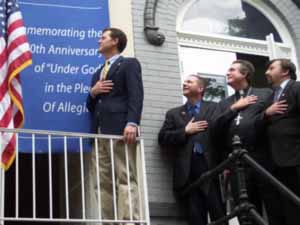 .
.